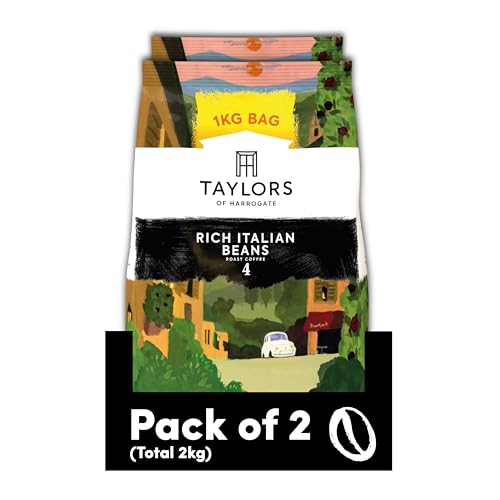Starbucks Coffee Beans 1kg
Before Peppermint Mocha and red holiday cups - Starbucks was a simple cafe in a rainy Seattle. Best coffee beans 1kg of the company were focused on selling whole bean coffee, but they weren't aware of the potential of espresso drinks.
The situation changed when Schultz was brought in. He was determined to showcase his roasting and blending abilities.
Origin
Before Starbucks coffee beans are in your cup, they've been through a lengthy and winding journey. Coffee is grown almost exclusively in the Coffee Belt. This area stretches across the globe between the Tropics Cancer and Capricorn. The taste of coffee beans is affected by the climate, soil and culture of the region. Starbucks sources its coffee beans from more than 30 countries.
Starbucks coffees are mostly sourced from Latin America, Africa and Asia-Pacific. These regions are renowned for their full-flavor and balanced of body and acidity. Starbucks also sources coffee from St. Helena in the South Atlantic Ocean, a volcanic tropical island paradise.
The Starbucks's coffee beans are meticulously roasted to perfection giving them an incredibly smooth and delicious flavor. The coffee beans are ground into a fine powder and ready for brewing. The powder is then mixed with water and put into the cup to create an exquisite cup. The result is a cup that is full of flavor and energy.
Starbucks stores offer a variety of single-origin beans. While most Starbucks coffees are blended from various beans, they also have some varieties made from one bean. Single-origin coffees from Starbucks offer many different flavors that include sweet and nutty fruity, chocolatey, and sweet. Certain single-origin coffees are certified organic.
Starbucks's beans are sourced from all over the world, but they must meet certain standards to qualify as specialty. The term "specialty coffee" only came into use in the 1980s, when cafes and roasters started to experiment with lighter roasting, manual techniques, and transparent sourcing. Starbucks didn't begin sourcing their coffee with these standards in mind however, it has since adopted some of them.
In addition, to ensure that its beans are cultivated in a sustainable way, Starbucks works to improve the lives of those who cultivate their coffee. It gives its farmers a profit above market prices and encourages them to invest in their communities. It also promotes sustainability and strives to reduce waste. This has led to the development of new coffee-growing practices and methods to help protect the environment.
Roast
Starbucks buys its beans in large quantities and roasts them in huge quantities. The process of roasting takes between 10 and 15 minutes. The result is that the beans are dark and roasted. The dark roasted beans give a rich flavor and have full body. The beans are then crushed and delivered to supermarkets and stores in the form of coffee grind. Most of the time the coffee grind isn't optimally suited to making the best cup of coffee since it is already bitter. This is why most people add a lot of cream, sugar, flavors whipping cream, and other ingredients to their cup of coffee. This will not mask the bitterness in the coffee, but it will make the drink more appealing.
When the beans are placed into the roaster they begin to steam due to their internal moisture. Then comes the "first crack", an audible sound that indicates when the roasting process has actually begun. At this point the sugars begin to caramelize and the bound-up water is released. During this time the structure of the bean is broken down and the oil begin to move outward. At the end of this stage the majority of coffees are considered to be city roasts.
The beans that have been roasted are removed from any stones, or other impurities, which may have escaped from the roaster. They are then inspected by hand prior to being packaged and sold. Some beans have a dark spot called"quaker. These beans did not change color or taste burnt. This is a typical condition and does not suggest that the coffee is not good.
The beans are typically roasted in small batches that can be as small as 20 pounds. They are referred to as "micro-lots". This is because each coffee will be roasted with specifications developed by a group of coffee masters from Starbucks headquarters. The team of experts in coffee creates unique profiles that are used by all Starbucks(r) roasting facilities around the globe. These profiles guarantee that every cup of coffee is consistent and has a certain amount of aroma, body and flavour.
Flavor

Starbucks purchases their beans directly from the farms where they were cultivated, in order to improve the quality of their coffee and ensure an ethical source. They also plant a coffee tree for every kilogram of beans sold. The beans aren't branded by their origin, but certain blends are. Veranda is from Sumatra; Komodo Dragon is from Indonesian; and Anniversary is a mix between the African and central American beans. The beans possess a distinct flavor profile and produce a smooth cup with delicately balanced sweetness and smoothness. Each sip unveils a symphony of flavors that leave a long, pleasant taste on your palate.
Weight
The weight of Starbucks beans 1kg is determined by the blend. A Starbucks House Blend, for instance, weighs 14 oz per pound. Walmart's pound of Espresso Roast beans weighs 16 oz. This translates into a 67% price premium at Starbucks when compared to Wal-Mart.
Starbucks' Pike Place Roast was named in honor of Seattle's iconic market. The medium-light roasting gives sweetness, balance and a silky smoothness to every cup. Made using beans from Latin America, this blend is perfect for Americano and espresso. This gourmet blend is packaged in a FlavorLock packaging to ensure the flavor. This is Starbucks' timeless signature coffee. A perfect choice for coffee lovers! Made with 100% Arabica beans. An ideal gift idea for all Starbucks fans.
